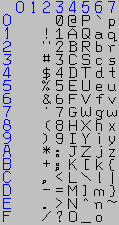Different Document Types
The types of documents involved are as follows:
- Version 5 documents (CATPart, CATProduct, etc.): these documents can be created and saved using Version 5
- interface files (IGES, DXF, etc.) and text files (XML): these files can be opened and converted to Version 5 document types
- Version 4 legacy documents (model, session, etc.): these documents can of course only be opened, not created.
Which Characters Are Legal and Illegal When Saving Version 5 Documents?
If you want to be sure that your documents can be opened and read in all cases, on both Windows and UNIX, and when the filename uses all regional characters, use the ISO-646 subset of characters: only the ISO-646 subset of characters is authorized (with the limitations described below).
What is the ISO-646 Subset?
ISO-646 provides the subset of characters common to all code pages, and is included in all industry standard code pages such as ISO8859-x, EUC-xxx, etc.
The ISO-646 subset contains the principal symbols you may need to use for naming documents:

This corresponds to an encoding of characters on 7 bits. The preceding illustration must be read the following way:
column, line
For example, the "LATIN CAPITAL LETTER A" possess the hexadecimal code 41 . The character set contains the following:
- characters A to Z (upper and lower case)
- numbers 0 to 9
- and certain special characters.
Control characters (the "0" and "1" columns in the illustration above) are not supported.
What About National Accented Characters?
Do not use national accented characters: they are simply not supported.
What About Special Characters?
The following special characters are not supported on Windows:
- > (greater than)
- < (less than)
- * (asterisk)
- : (colon)
- " (quotation mark)
- ? (question mark)
- \ (backslash)
- | (vertical bar)
and the following special character is not supported on both Windows and UNIX:
- / (slash).
This means that you cannot use national accented characters or any of the forbidden special characters listed above when creating and saving documents. In any case, on UNIX, to enhance document interoperability between the UNIX and Windows platforms, a filter is activated to prevent you from creating CAT documents whose names contain special characters not supported on Windows.
Consequently, avoid the temptation to rename your documents with operating system tools (for example, using the Windows Explorer) and because you run the risk of adding national accented characters or forbidden special characters: you will not be able to read them.
Working with Interface-Type Documents
There are slightly more intricate problems you should be aware of when importing Multi-CAD data into Version 5 (for example, IGES files). When you do so, a conversion is performed. Depending on the way you want to use the data, you can choose to create different types of output files (cgr, CATPart, etc.).
For example, when you open an IGES file it converts the data into a CATPart. However, when you save the file, a specific item of information in the CATPart, the Part Number, is saved. The part number uses the name of the original IGES file. If this name contains illegal characters, you will not be able to save the document.
You can always re-save the document as an IGES document.
Working with Version 4 Documents
The following table specifies, for each Version 4 data type listed, any
problems in reading the data due to forbidden characters in the data name:
|
UNIX Data from Version 4 |
On UNIX |
On Windows |
| model (or
PRJMODEL) Example: MY***.model
|
You can read Version 4 model documents containing either national accented characters or any of the forbidden special characters. | Impossible
to read. You can read Version 4 model documents containing national accented characters, but you cannot read Version 4 documents containing forbidden special characters. You must rename the model before reading it, so it does not contain special characters. |
| *MASTER *LISTFAM PRJ tables using ":" |
You can read them. | Impossible to read. |